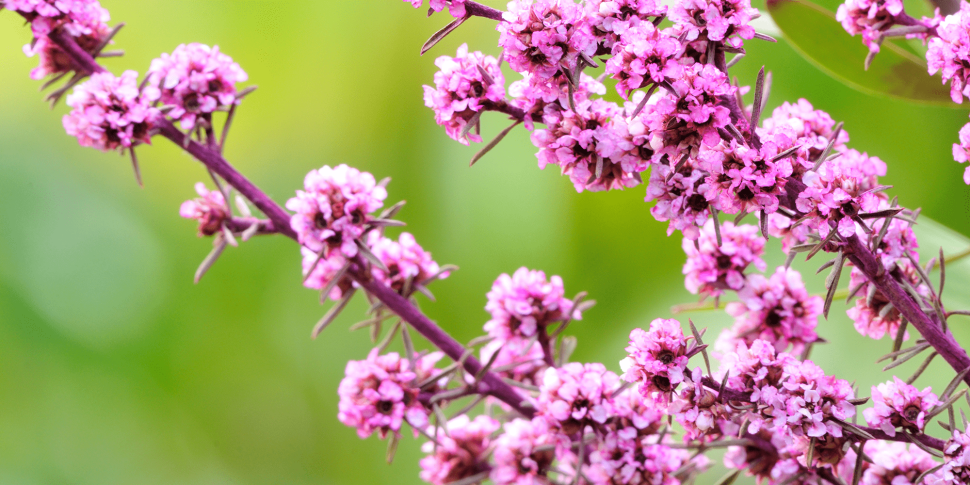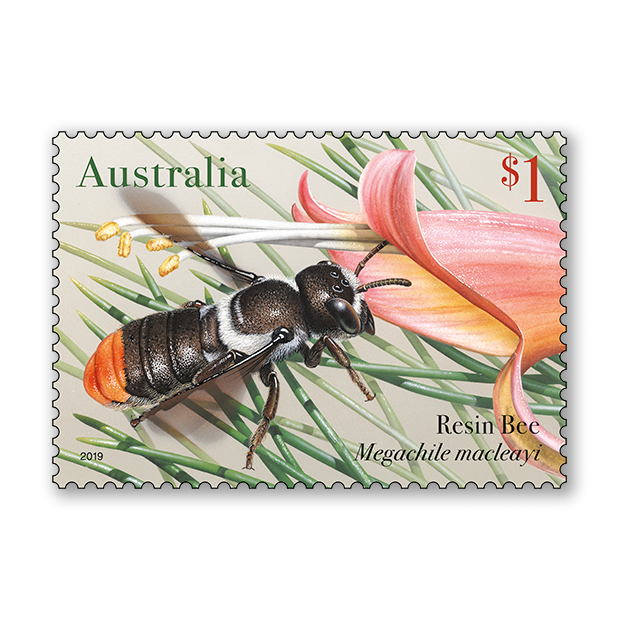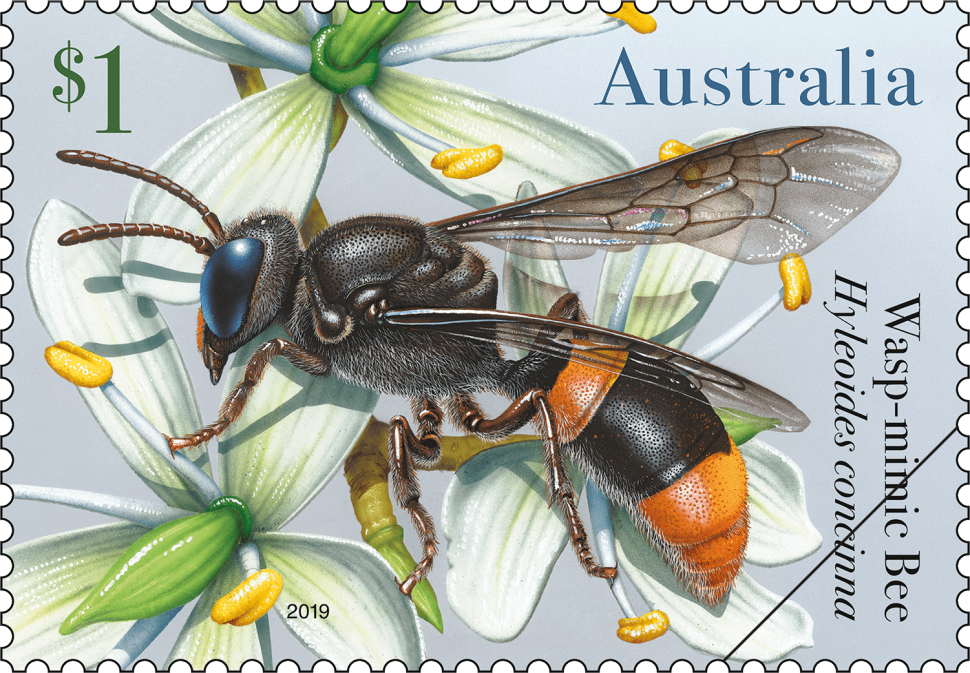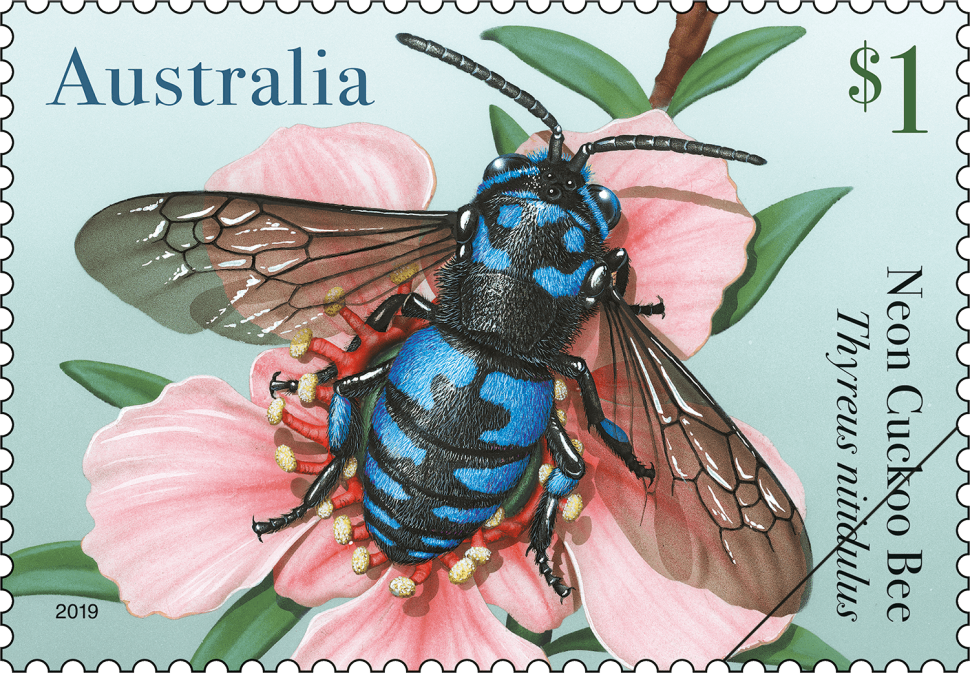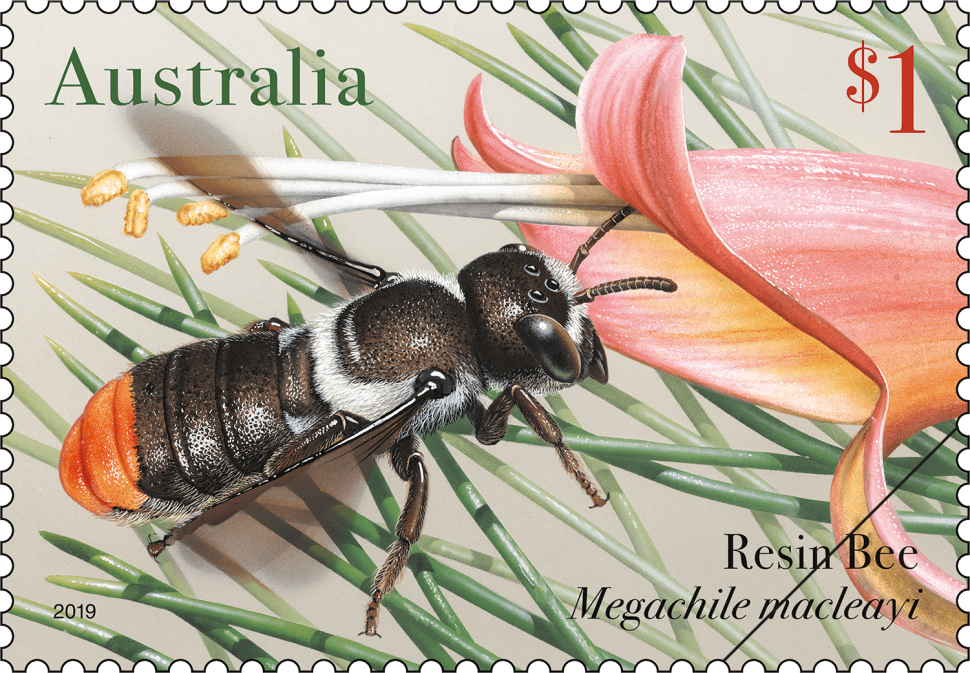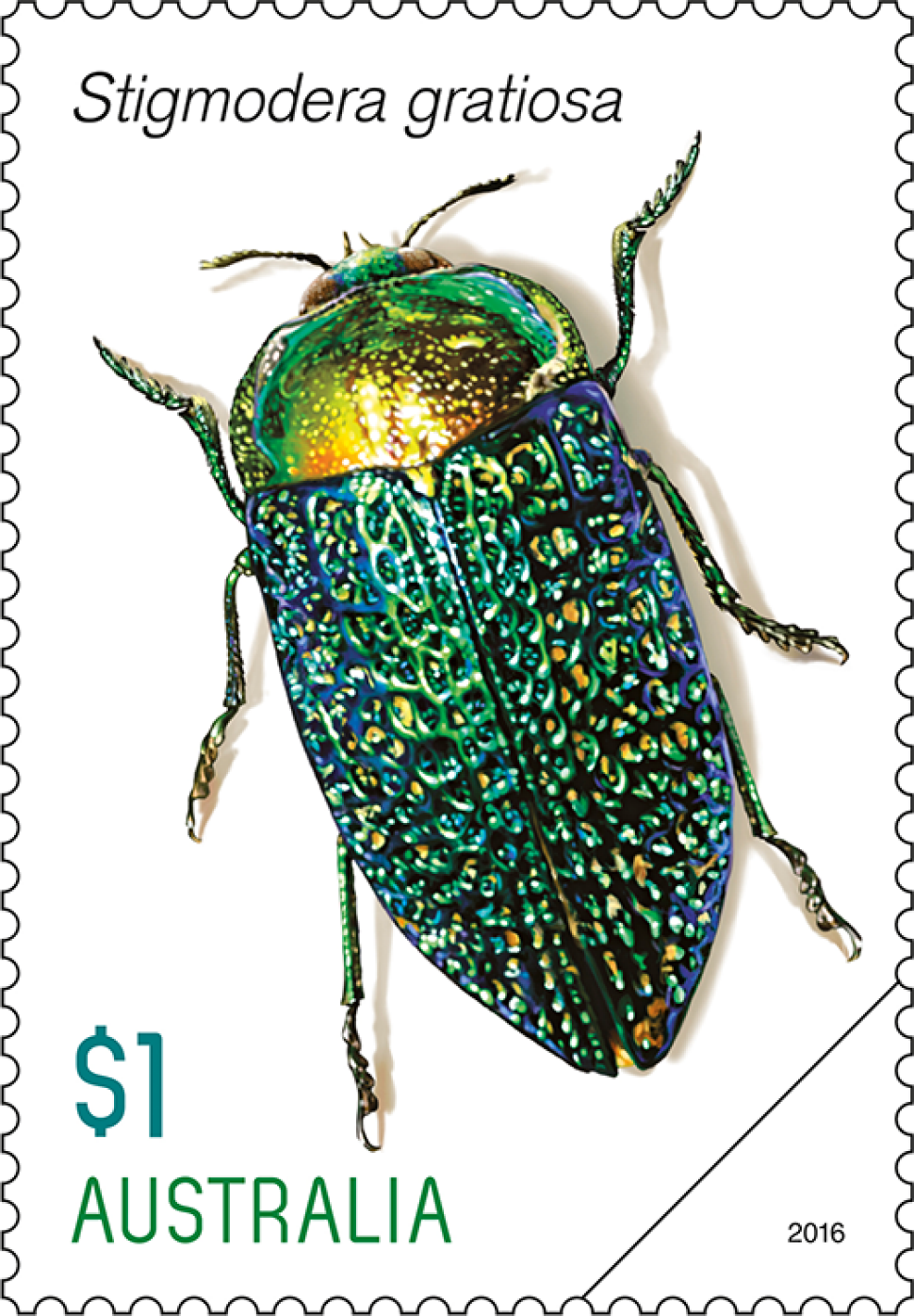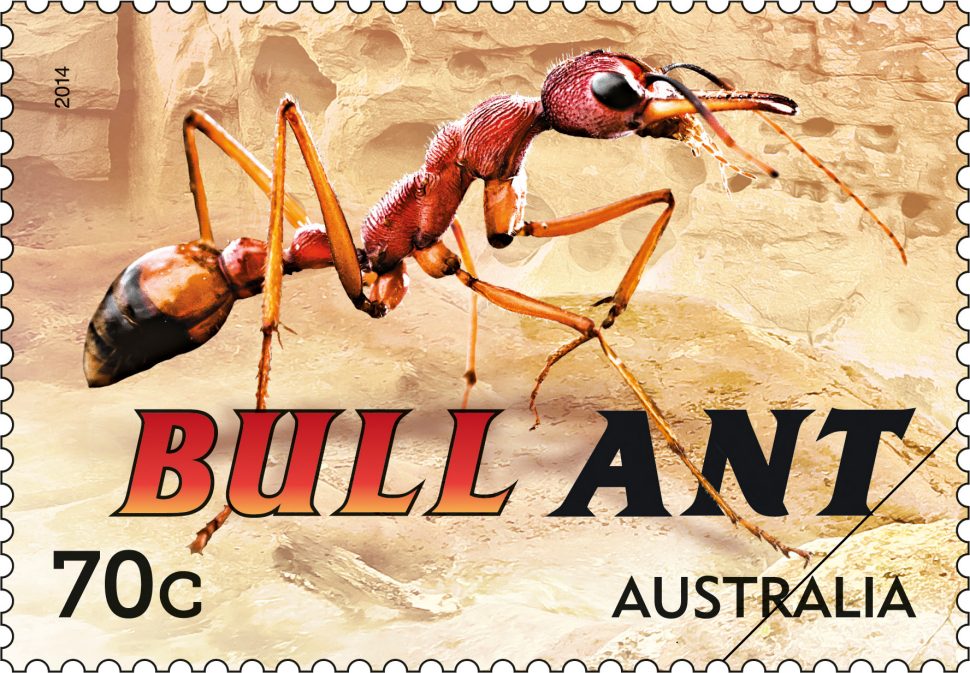Overview
Most of us are familiar with the introduced European honey bee (Apis mellifera) yet are unaware of the great diversity of the more than 1,500 species of native bees found throughout Australia. Most of these species are solitary, making their nests in burrows in the ground or in small hollows in dead wood; however, 11 stingless species from tropical and sub-tropical Australia are social, making “sugarbag” honey in tree hollows. Native bees are important pollinators of native flora and a vital part of the country’s biodiversity. The conservation challenges faced by Australia’s native bees include habitat destruction and fragmentation as well as climate change.
This stamp issue, illustrated by artist Kevin Stead, depicts representatives from the four main native bee families in Australia. These four bees vary in length between one and two centimetres.
Technical specifications
- Issue date
- 14-May-2019
- Issue withdrawal date
- 30-November-2019
- Denomination
- 4 x $1
- Stamp and products illustration
- Kevin Stead
- Product design
- Sharon Rodziewicz, Australia Post Design Studio
- Paper: gummed
- Tullis Russell
- Paper: self-adhesive
- Securepost MC90
- Printer
- RA Printing
- Printing process
- Offset lithography
- Stamp size (mm)
- 37.5 x 26
- Perforations
- 13.86 x 14.6
- Sheet layout
- Module of 50
- FDI Postmark
- Werribee, Vic 3030
- FDI withdrawal date
- 12-June-2019
The Resin Bee, from the family Megachilidae, builds its nest in a narrow holes in timber, constructing the nest and sealing the entrance with gums and resins it collects from leaves and plants. This solitary bee, which is found across northern Australia, prefers nectar from legume flowers.
From the family Halictidae and found throughout eastern Australia, the solitary Green and Gold Nomia Bee nests in the ground. After looking for mates and foraging for nectar during the day, clusters of numerous male bees spend the night clinging or “roosting” together on tree twigs or grass stems.
The solitary Wasp-mimic Bee from the family Colletidae can most frequently be seen feeding from eucalypt flowers in eastern Australia from southern Queensland to Tasmania. It convincingly disguises itself as a black and orange wasp in order to fool and deter predators. The female builds her nest in stumps, logs or fallen trees, lining the walls and sealing the entrance with a cellophane-like material that she secretes.
The striking, bright metallic blue Neon Cuckoo Bee from the family Apidae is so named because it opportunistically lays its eggs on the pollen balls inside the ground nests of the Blue-banded Bee (Amegilla cingulata). This solitary cleptoparasitic bee, which has no need to collect pollen from flowers, is found across eastern and northern Australia.
Shop our stamp collectables
Set of stamps:
This set of stamps contains all four gummed stamps from the Native Bees stamp issue.
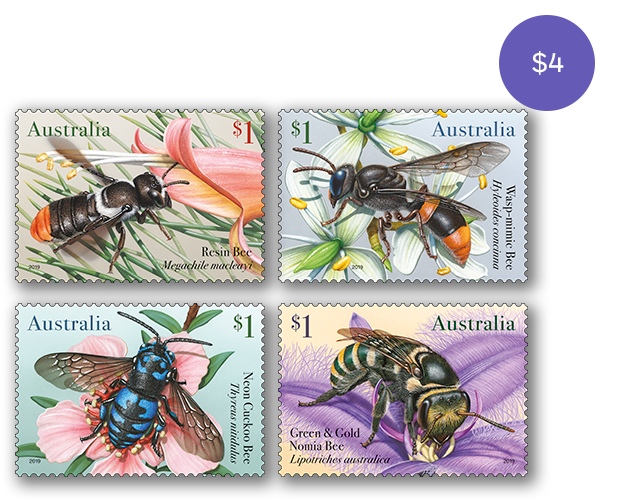
Stamp pack:
The Native Bees stamp pack contains all four stamps from the stamp issue presented in high quality folder.

Booklet of 10:
This booklet contains 10 x $1 self-adhesive Neon Cuckoo Bee stamps from the Native Bees stamp issue.

Maxicard set:
This maxicard set contains the four maxicards from the Native Bees stamp issue.
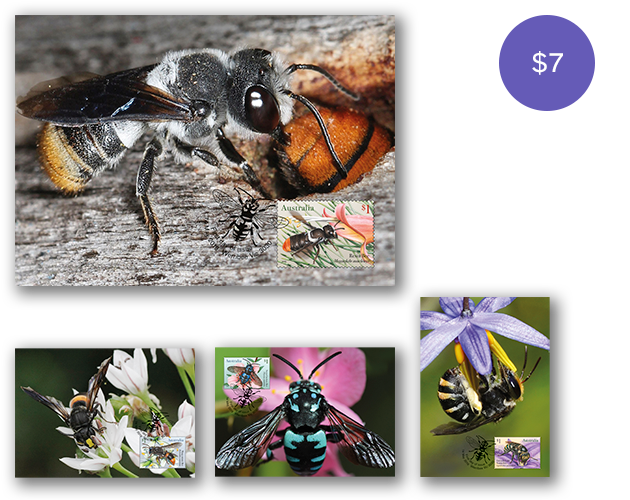
- Set of stamps
- Stamp pack
- Booklet of 10
- Maxicard set
Additional products:
- Pictorial envelope for the Native Bees stamp issue
- First day Native Bees gummed stamps cover
- Booklet of 10 $1 Resin Bee stamps
- Booklet of 10 $1 Wasp-mimic Bee stamps
- Booklet of 10 $1 Green & Gold Nomia Bee stamps
- Native Bees postal numismatic cover
- Native Bees stamp and medallion cover
- Native Bees stamp and 3 x medallion cover
- Native Bees booklet collection
- Gutter strip 10 Native Bees $1 Resin Bee stamps
- Gutter strip 10 Native Bees $1 Wasp-mimic Bee stamps
- Gutter strip 10 Native Bees $1 Green & Gold Nomia Bee stamps
This content was produced at the time of the stamp issue release date and will not be updated.
